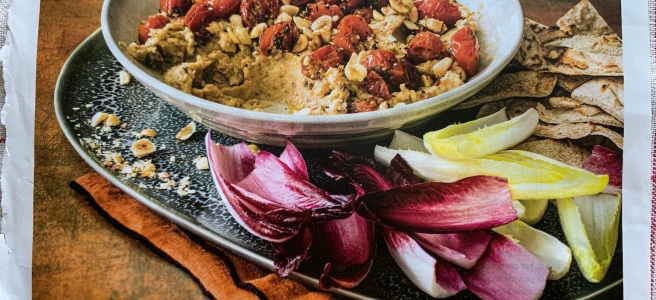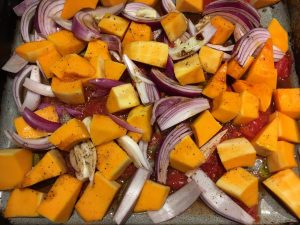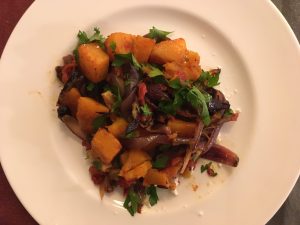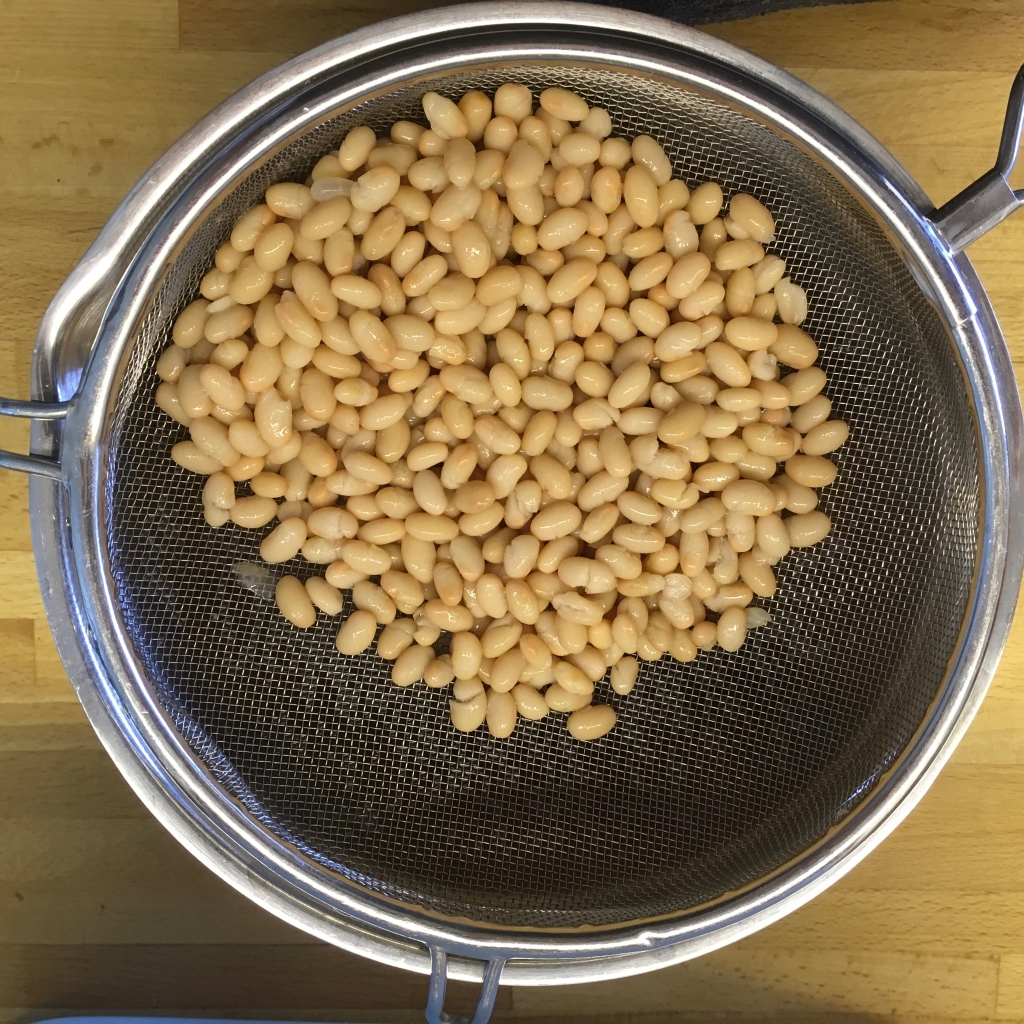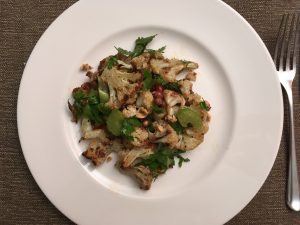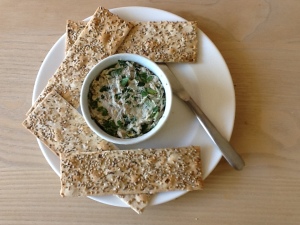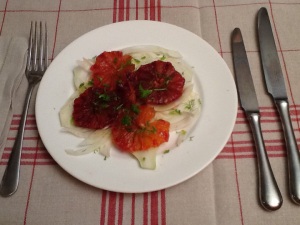One of my favourite times of the day is that point where the day’s work is done, supper is on the hob and you can sit down to relax with a glass of something refreshing and a few nibbles. Unless we have guests, I rarely prepare anything elaborate (see my post on snippets for fancier occasions), but some nuts or a tasty dip with a few crudités or tarallini (these fennel-seed ones are addictive) are perfect to keep you going until food is on the table. So I’m always on the lookout for new recipes for dips.
I thought the combination of parsnips and beans could be a bit bland, but roasting the parsnips with garlic, the addition of hazelnuts and the caramelised tomatoes mean this is so tasty that we have served it to foodie friends as a first course to acclaim. Don’t be alarmed about the whole head of garlic – the flavour is much gentler once it has been roasted in the oven. And yes, it does need all that lemon juice!
The recipe is from the Waitrose magazine, and they say it serves 4, but I reckon it serves 6-8 as a starter. It will keep for a day or two in the fridge, but not much longer. I forgot to take a photo, but here’s a snap of the image from the original recipe to give you an idea.

- 500g parsnips
- 2.5 tsp olive oil
- 1 small bulb garlic
- a few sprigs of rosemary or thyme
- 1/4 tsp chilli flakes
- 225g baby plum or cherry tomatoes
- 60g blanched hazelnuts
- 400g can butter beans
- juice of 2 lemons
- Chicory leaves and flatbread or other bread to serve
Preheat the oven to 175C fan. Peel the parsnips and cut them into 2cm slices – I cut the fat slices from the top in half too. Put in a baking dish in a single layer and toss with 1tbsp olive oil. Season with salt and pepper and push the whole head of garlic in the centre. Cover with foil and roast for about 30 minutes.
Put the tomatoes with the rosemary or thyme, chilli flakes and a tsp of oil into another tin and add them to the oven once the parsnips have had about 15 minutes. They should take about 20 minutes to become soft and caramelised. Check the parsnips and if necessary give them another 5 minutes without foil – they do need to be tender to the point of a knife.
Put the hazelnuts on a small baking try and toast them in the oven for 7-8 minutes (no more – they catch easily). Roughly chop 20g of the hazelnuts and set them aside.
Once the parsnips and tomatoes are done take them out of the oven and leave to cool a little while you squeeze the cloves of garlic out of their papery skin (use rubber gloves if you’re worried about having garlicky hands). Put the remaining 40g of hazelnuts into a food processor with the roasted parsnips and garlic, drained butterbeans, the remaining tbsp or so of olive oil and most of the lemon juice.
Process for 3 minutes, scraping down the bowl of the food processor as necessary. Taste and add the rest of the lemon juice, or a little more oil, salt or pepper as needed. Give it a final whizz, then turn into a large shallow bowl or platter. Arrange the roasted tomatoes on top, with all their delicious caramelised juices, and top with the chopped hazelnuts.
Serve with chicory leaves to scoop it up, flatbreads, pitta or sourdough.

